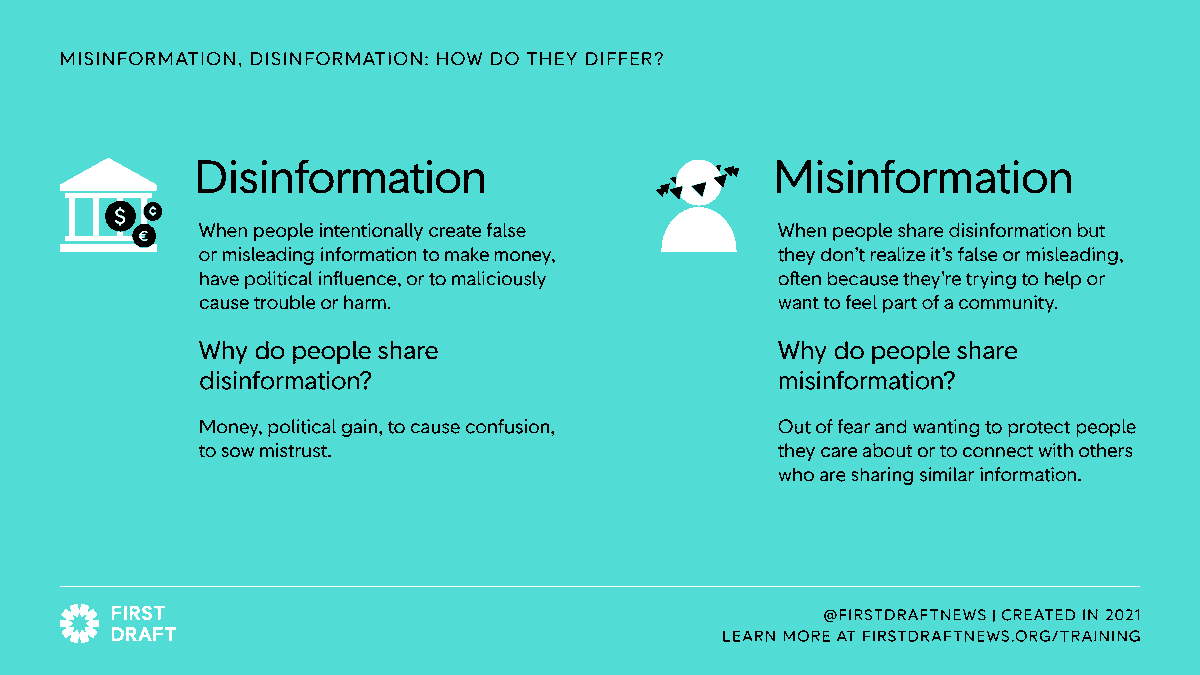(THREAD) There’s been chatter about threat modeling based on a @jayrosen_nyu piece. Since Sept ‘19, we’ve run over 25 crisis simulations with more than 1k people working in the media, at platforms and organizations with great results. What we’ve learned
pressthink.org/2020/09/the-na…
pressthink.org/2020/09/the-na…
1. People don’t know what they don’t know and what they’re not ready for. 2. Putting people from different newsrooms and platforms together is necessary for us to understand the dynamics of the information environment in real time.
3. Finding different ways to engage people on these issues is critical. As a participant said, “This has all the fun of a breaking news event, with none of the responsibility.” Journos love the adrenaline rush of a real-time scenario, particularly those put off by “training.”
We don’t run tabletop events (usually facilitated discussions). We use interactive software to host participants in simulated spaces that look like Twitter, Facebook, YouTube, Slack, etc. This is an essential aspect of designing a real-world scenario and ramps up the pressure. 
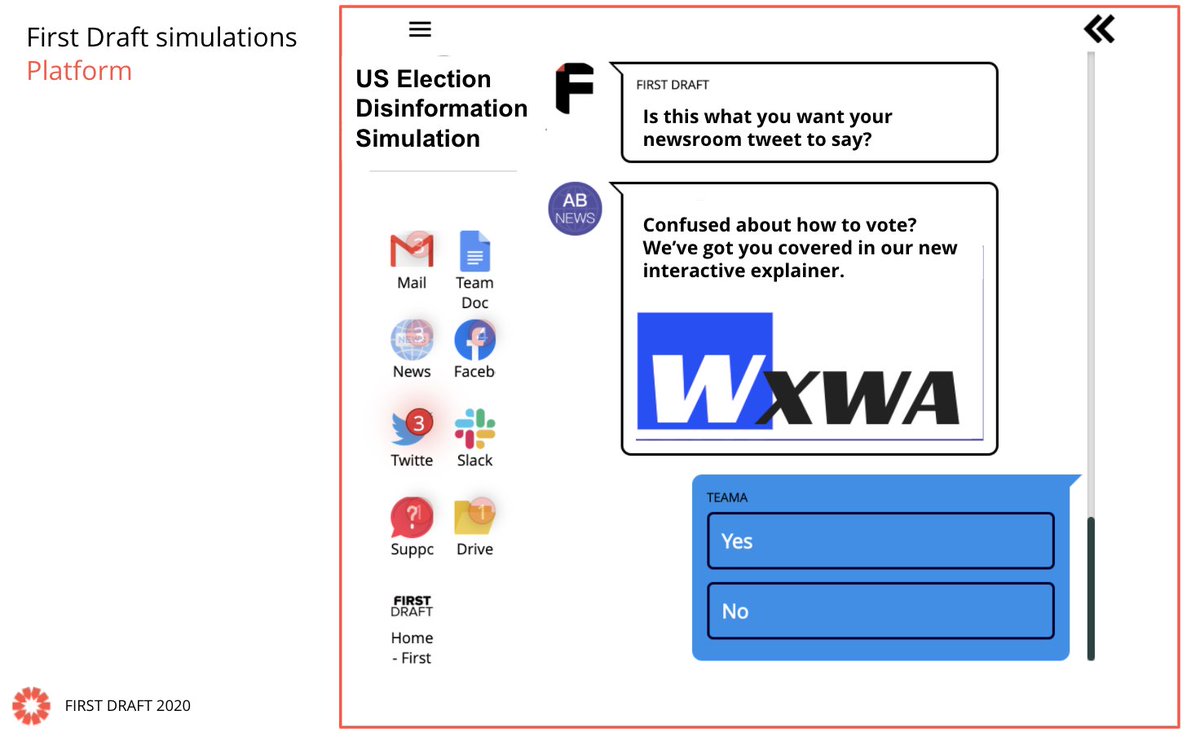
We put people in groups of imaginary organizations (either newsrooms, platforms or community) because collaboration and teamwork are key. While everyone starts the simulation sitting and smiling, this quickly escalates to standing and swearing as intensity and frustration build. 
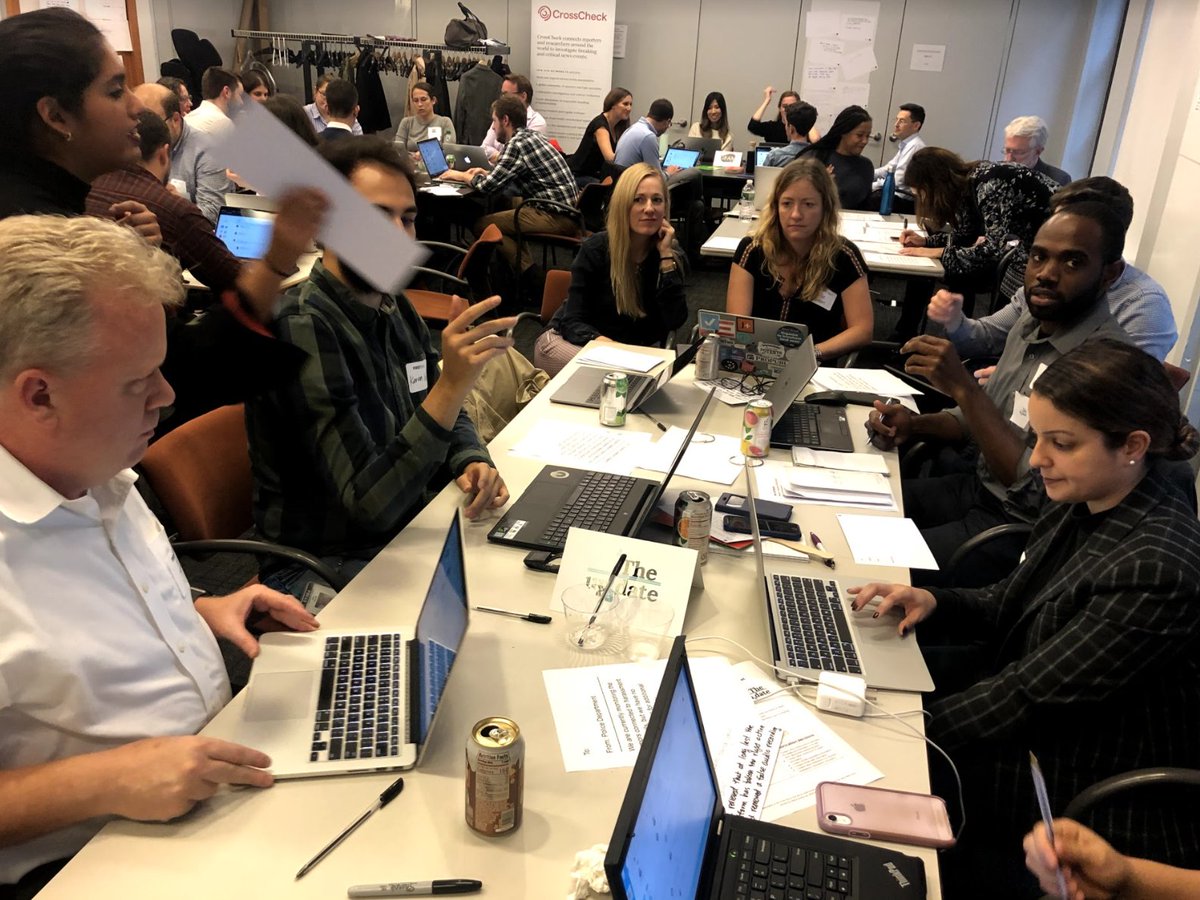
All scenarios are based on genuine examples we’ve seen over the years. Manufacturing believable misinformation is harder than it sounds, and we went to great lengths to ensure no screenshots or rumors could make it outside the simulated environment.
We designed over 200 accounts to pump out manipulated, coordinated and confusing content (within the closed platform) in real time. Participants quickly recognize the value of setting up systems for social monitoring and having digital verification experts on the team.
At our events, teams work together to make decisions about how to respond to what they are seeing online, and “publish” their agreed-upon output on a Newsfeed Wall. In almost every case, newsrooms want to see what others are publishing before they make tricky decisions. 
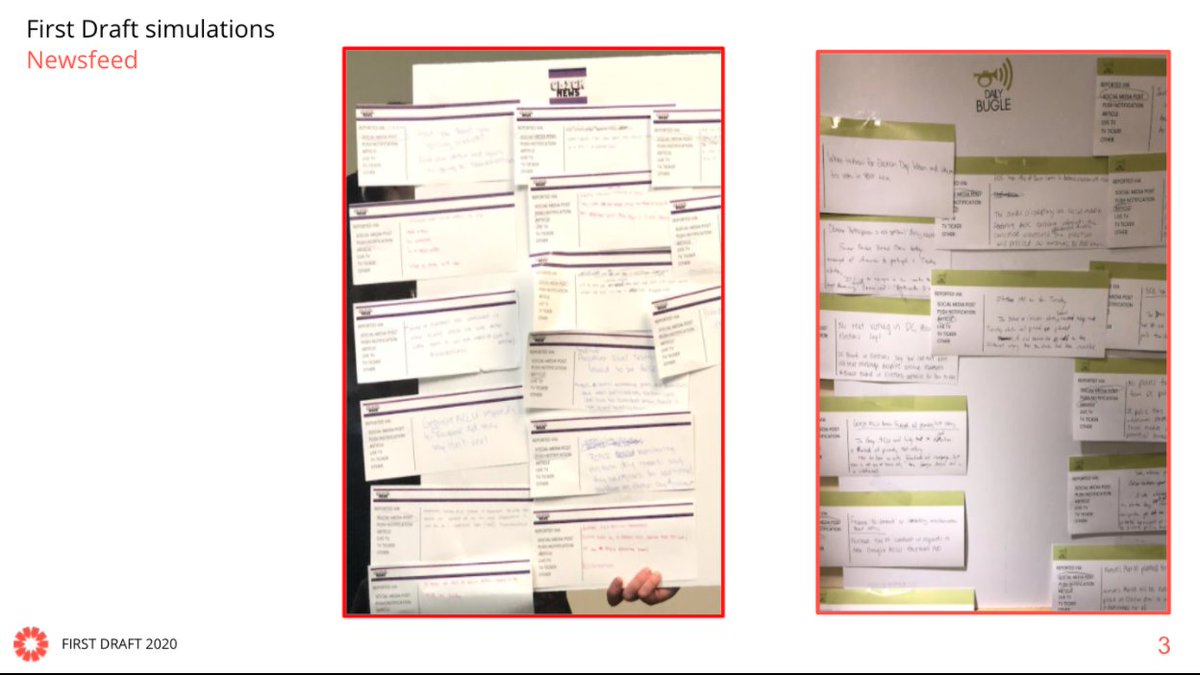
Platforms are tasked with managing their own communications, while also making fictional take-down decisions. How and when to respond is the most important discussion, alongside the value of collaboration with rival organizations to help prevent misinformation scale and spread. 
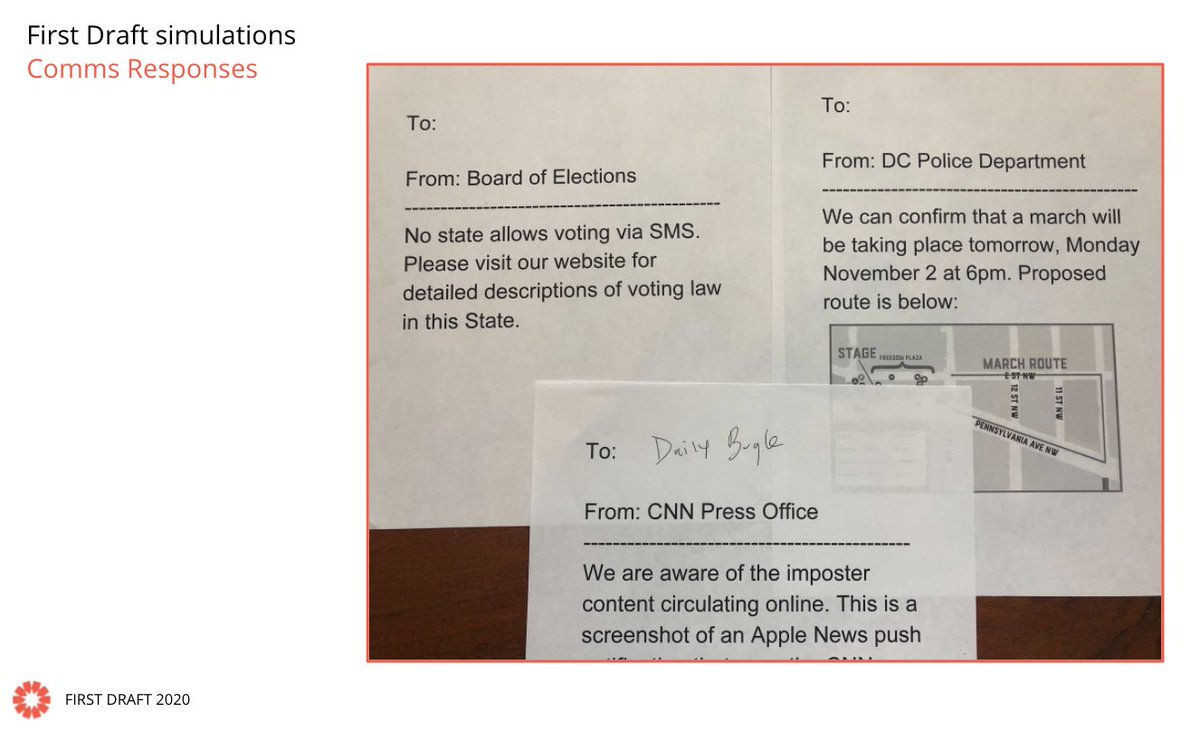
Wording headlines and social posts is given as much importance as an article or broadcast. The aim of these simulations is to test fast, effective, consistent messaging from multiple trusted information sources. This challenge is then reflected upon in the post-event debrief.
Our simulations aid threat modeling and preparedness, and though we have focused specifically on the election for the past 12 months, there’s now a need to design for other critical topics vulnerable to misinformation, such as health and climate.
We know how valuable these simulations are as skills and awareness training, so we will integrate ways to set objectives. Changes in culture and process require senior buy-in, and in our experience, there’s no better way to demonstrate the urgency of building internal resilience
Each of our five scenarios shows disinformation campaigns that could play out in the coming weeks. We’ve had to adapt in this age of Zoom, and we’ve been running some simpler slide-based versions, but these simulations are still working. We’re working on a “self-drive” version. 
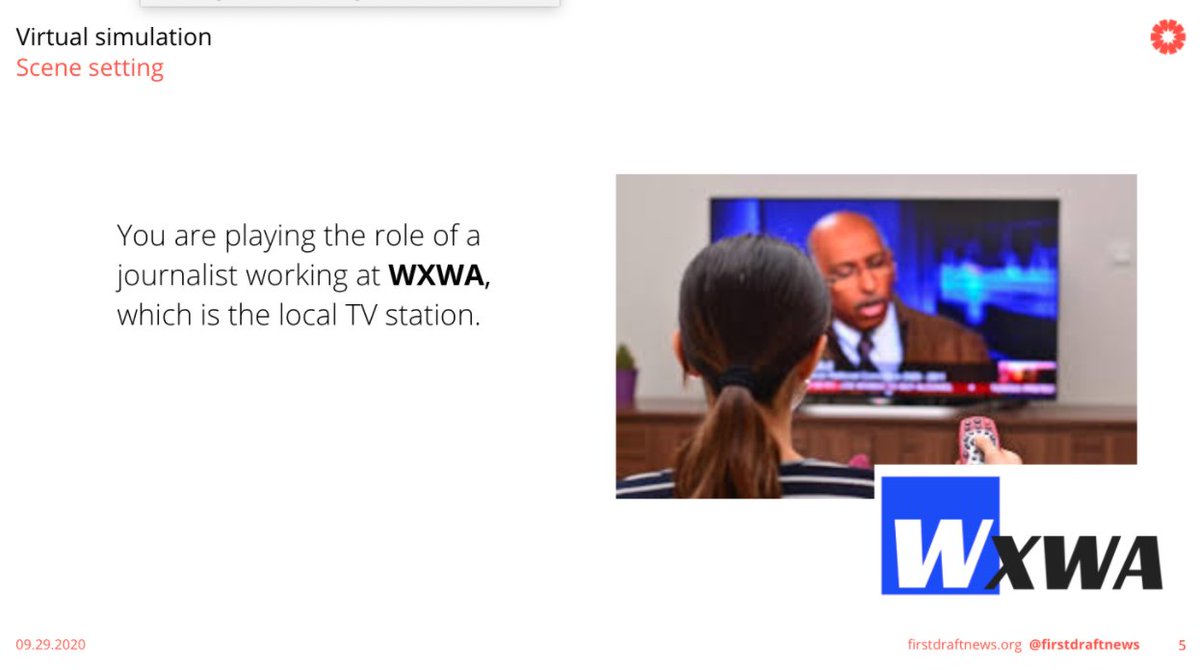
Feedback has been overwhelmingly positive, but sessions raise more questions than answers. Ongoing support is essential to ensure new ideas and strategies are applied. Threat modeling is only the first step.
Thank you for reading. If you would like to talk to us about running a simulation with your newsrooms, there is still time before the US election! Get in touch at training@firstdraftnews.com.
• • •
Missing some Tweet in this thread? You can try to
force a refresh


